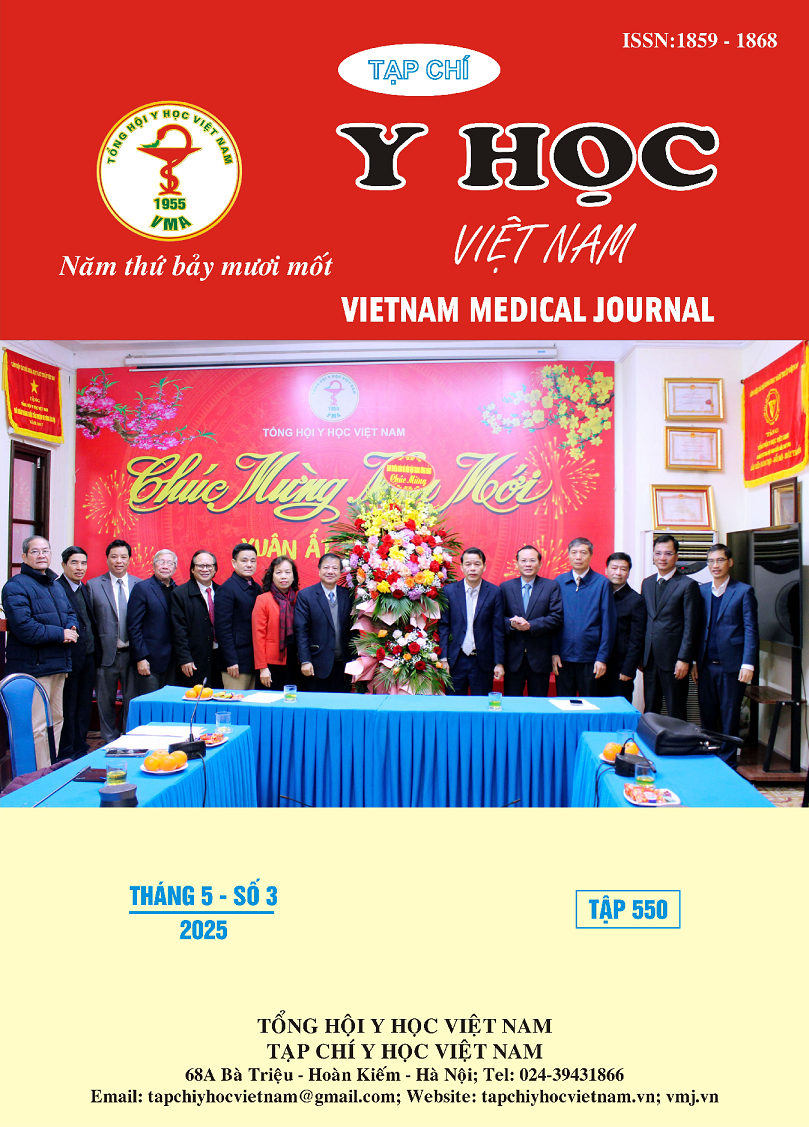RESULTS OF IMPLEMENTING THE CODE STROKE PROTOCOL MANAGEMENT OF ACUTE STROKE PATIENTS USING INTRAVENOUS THROMBOLYTIC THERAPY AT VINMEC TIMES CITY HOSPITAL PERIOD 2021–2024
Main Article Content
Abstract
Objective: This study evaluates the implementation of the "Code Stroke" protocol in the Emergency Department of Vinmec Times City International Hospital and its impact on acute stroke management times and patient outcomes. Methods: A before-and-after observational study was conducted to compare stroke management indicators over two years before (2021-2022) and two years after (2023-2024) the implementation of the Code Stroke protocol. All patients with acute ischemic stroke who received intravenous thrombolysis were included. Results: 35 stroke patients were analyzed (18 before implementation, 17 after implementation). The median time from hospital arrival to CT/MRI imaging decreased from 21 minutes before Code Stroke to 15 minutes after implementation (p < 0.01), and the median door-to-needle time decreased from 40 minutes to 28 minutes (p < 0.01). Regarding treatment outcomes, NIHSS scores improved significantly (p = 0.008), but the proportion of patients with good functional outcomes at discharge (mRS 0–2) was 60% before implementation and 75% after (p > 0.05). Conclusion: The implementation of the Code Stroke protocol in the Emergency Department significantly reduced acute stroke management times. Although clinical outcomes showed a trend toward improvement, larger sample size is needed to confirm statistical significance. This experience suggests that a well-organized Code Stroke protocol can optimize stroke care in accordance with international standards, thereby improving patient outcomes.
Article Details
References
2. Chen CH, Tang SC, Tsai LK, Hsieh MJ, Yeh SJ et al (2014). Stroke code improves intravenous thrombolysis administration in acute ischemic stroke. PLoS One. 2014 Aug 11;9(8):e104862. doi: 10.1371/journal.pone.0104862. PMID: 25111200; PMCID: PMC4128738.
3. Fonarow GC, Smith EE, Saver JL, Reeves MJ, Hernandez AF, et al. (2011). Improving door-to-needle times in acute ischemic stroke: the design and rationale for the American Heart Association/American Stroke Association’s Target: Stroke initiative. Stroke 42: 2983–2989.
4. Leite KFS, Dos Santos SR, Andrade RLP, de Faria MGBF, Saita NM et al (2022). Reducing care time after implementing protocols for acute ischemic stroke: a systematic review. Arq Neuropsiquiatr. 2022 Jul;80(7):725-740. doi: 10.1055/s-0042-1755194. Epub 2022 Sep 29. PMID: 36254446; PMCID: PMC9685828.
5. Cong NH. Stroke care in Vietnam. Int J Stroke. 2007 Nov;2(4):279-80. doi: 10.1111/j.1747-4949.2007.00149.x. PMID: 18705929.
6. Saver, J.L. (2006). Time is Brain—Quantified. Stroke, 37(1): 263–266. DOI: 10.1161/01. STR.0000196957.55928.ab.
7. Vanhoucke J, Hemelsoet D, Achten E, De Herdt V, Acou M et al (2020). Impact of a code stroke protocol on the door-to-needle time for IV thrombolysis: a feasibility study. Acta Clin Belg. 2020 Aug;75(4):267-274. doi: 10.1080/ 17843286.2019.1607991. Epub 2019 May 11. PMID: 31081471.
8. William J. Powers, Alejandro A. Rabinstein, Teri Ackerson, Opeolu M. Adeoye, Nicholas C. Bambakidis et al (2019). AHA/ASA 2019 Guidelines for the Early Management of Patients with Acute Ischemic Stroke. Stroke. 2019;50:e344–e418. https://www.ahajournals. org/doi/full/10.1161/STR.0000000000000211.


